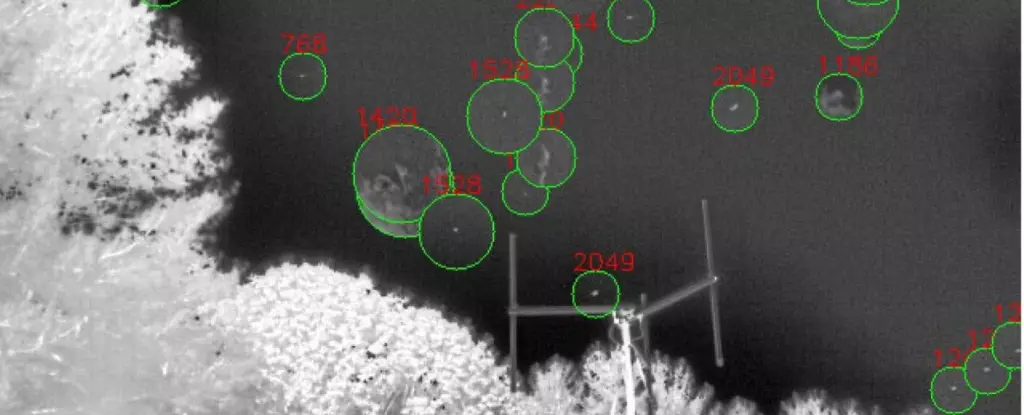In recent years, the interest in Unidentified Aerial Phenomena (UAP) has shifted dramatically from the fringes of conspiracy theories to a mainstream scientific endeavor. Following the Office of the Director of National Intelligence (ODNI) report in 2021, which provided publicly accessible information about UAP incidents, we’ve entered an unprecedented age of inquiry into the potential existence of extraterrestrial life. The Department of Defense has taken this further by initiating annual reports on UAP through the All-domain Anomaly Resolution Office (AARO). Despite these advancements, there’s an obvious gap in empirical scientific data concerning these anomalies, which necessitates groundbreaking approaches like the one proposed by the Harvard-Smithsonian Center for Astrophysics (CfA) and the Galileo Project.
The Ingenious Proposal of Dalek
At the heart of this endeavor is an innovative instrument dubbed Dalek—named after the iconic antagonists from the *Doctor Who* series—which aims to revolutionize our understanding of aerial phenomena. Spearheaded by Laura Domine at Harvard University, this study brings together a multidisciplinary team of researchers, each contributing a wealth of expertise. The Dalek proposal, presented during the 2025 Lunar and Planetary Science Conference in Texas, is not merely a tool but an astrophysical sentinel designed for an all-sky surveillance of potential extraterrestrial spacecraft.
The significance of this initiative cannot be overstated. Considering NASA’s recommendations from a 2023 independent study that emphasized the need for quick-adjusting sensors and multisensory platforms, Dalek embodies these principles by collecting multispectral and multimodal data to present a comprehensive view of UAP encountered in our skies.
A Comprehensive Framework for Data Collection
What sets the Dalek apart is its sophisticated design—an observatory that is not just reactive but deeply analytical. The studies suggest that the use of multisensor technology will allow researchers to capture more than just images; they’ll potentially record a UAP’s motion, shape, color, and even acoustic information in real-time. This detailed approach may facilitate greater insight into the behaviors and characteristics of UAPs, making it a cornerstone for future studies.
The pioneering spirit of the Galileo Project is also noteworthy. Working with multiple observatories in Pennsylvania and Nevada, the project aims to collect and analyze data on upward of 100,000 objects monthly. This mammoth effort is already yielding a massive database; around 1 million objects have been cataloged so far, wielded by advanced machine learning algorithms. The integration of spin-off technologies like You Only Look Once (YOLO) for object detection and Simple Online and Real-time Tracking (SORT) algorithms for trajectory reconstruction is a masterstroke in isolating and identifying unusual phenomena.
Transforming Data into Discoveries
Statistically speaking, in just five months of operation, the observatories have detected approximately 500,000 objects. A notable 16% of these were flagged as outliers requiring a thorough examination, leaving 144 trajectories open to investigation. The ambition to distinguish these UAPs hinges on precise measurements and triangulation, helping to conclusively determine whether any manifest evidence of advanced extraterrestrial technology.
Professor Avi Loeb, a key figure behind the Galileo Project and a renowned astrophysicist, emphasizes the criticality of bridging the gaps left by governmental studies. While previous reports by AARO indicated a mere 3% of cases as ambiguous, the collective array of Dalek’s sensory observations offers a significantly larger outlook, possibly being the key that unlocks the mysteries associated with UAPs.
Given the gravity of their mission, Loeb articulates the ultimate goal of this enterprise: to uncover any objects exhibiting extraordinary flight characteristics or designs that elude our current technological grasp. Just a single discovery of a bona fide technosignature—evidence pointing towards an advanced civilization—could alter humanity’s course and perceptions of our place in the universe as dramatically as any scientific breakthrough.
The Road Ahead: Anticipating the Unknown
As we stand on the precipice of what might constitute the most transformative scientific discovery in modern history, the implications resonate far beyond academic circles. The Dalek project not only embodies a leap forward in astrobiological research but also invites society to reconsider its stance on the cosmos and our intertwined destinies.
There is a palpable excitement surrounding the prospect of uncovering evidence of extraterrestrial life, fueling public imagination and scientific inquiry alike. Every observation, every data point captured by the Dalek observatory isn’t just a step toward unveiling UAP; it’s an invitation to consider the unthinkable: Are we alone, or is the universe teeming with life waiting for us to discover it? Only time—and diligent research—will unravel these mysteries, but the journey promises to be as enthralling as the destination itself.


Leave a Reply